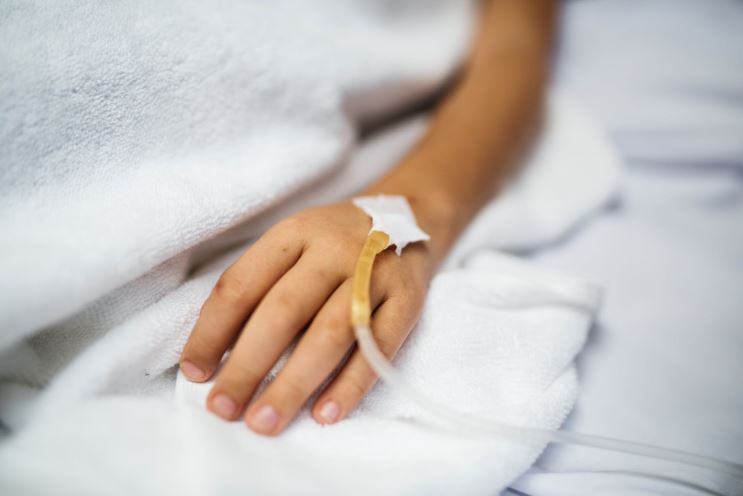
Critical Illness Comes with Serious Costs: What You Should Know
Getting sick is not just a huge hassle. It can be expensive. Even with a simple case of common cold or flu, there are things you need to do or buy just for you to get better. There’s a feeling of regret because you think your time and your money could be better spent into other more important things.
It’s an entirely different story when you talk about more serious illnesses, such as heart attack, stroke, or cancer, among others. Just thinking about you or any member of your family being critically ill is worrisome because aside from its accompanying emotional burden, it can be financially devastating.
Let’s get real. Hospitalization and medical treatment are not cheap. If you are caught unprepared, all the bills and related expenses can wipe out your savings in an instant and may even leave you burdened with debt.
Unfortunately, Filipinos are at high risk for critical illnesses such as cancers, heart ailments, and chronic respiratory diseases. According to the World Health Organization (WHO) and the Department of Health (DOH), this vulnerability is caused by unhealthy diet, physical inactivity, and the harmful consumption of alcohol.1
Realistically speaking, a typical Filipino family with an average annual income of ₱267,0002 will have difficulties paying for treatment, especially if the one struck with critical illness is the breadwinner. This is why it’s important to have a plan in place in case such conditions affect you or your family.
The cost of critical illness
A surgical package deal for an open heart surgery in a government hospital can range from ₱300,000 to ₱600,000, depending on the complexity of the illness. The price of Coronary Artery Bypass can easily skyrocket to ₱1 million.3 Treatment for cancer and chronic respiratory diseases can be equally crippling and the list of expenses do not end there.
Critical illnesses often come with expensive post-surgery care and lifestyle changes. Depending on the specific ailment, patients may be required to undergo rehabilitation or may need round-the-clock assistance from a caregiver. There are also non-medical items that need to be purchased for personal comfort.
Getting diagnosed with critical illness often means being unfit for work. This means a loss of income for an indefinite period of time or salary cuts due to extended leaves. On top of the hefty medical bills, daily living expenses such as groceries, house payments, utilities and more will keep on piling up.
Having enough funds to cover for all the expenses can make the situation less burdensome for everyone involved. It is an important part of a healthy financial plan to be prepared in case a critical illness comes your way.
Preparing for the worst
There is no fast and easy way to deal with any critical illness. You need to use a combination of preventive and preparatory measures so that you won’t be caught off guard when the worst happens.
DOH says that switching to a healthy lifestyle might help in reducing the chances of acquiring a critical illness. This means eating more vegetables and exercising regularly.4 However, keep in mind that no matter how fit and healthy you feel, it is still important to prepare yourself financially in case critical illness strikes.
It’s also important to know the benefits you can get from the Philippine Health Insurance Corporation (PhilHealth), which is the universal health coverage run by the government. PhilHealth offers the Z Benefit Package which provides assistance for critical health conditions such as cancer and kidney disease, among others. However, the Z Benefit Package can only be availed in 23 hospitals nationwide and the benefit is offered to very specific diseases. It does not give you the flexibility nor the freedom to choose the kind of healthcare you prefer.
You might think that having coverage from a reputable Health Maintenance Organization (HMO) can help ease the financial burden of a critical illness. But an HMO plan is typically designed for basic healthcare services such as inpatient care, outpatient care, and emergency hospitalization. Therefore, the benefits are usually not enough for prolonged hospitalization and critical illness treatment. Depending on the premiums paid and the chosen HMO company, the maximum benefits can range from ₱80,000 to ₱700,000.
To fill in all the gaps for conditions that require expensive care, it is best to get an insurance policy with critical illness coverage.
Critical care insurance
It is a common misconception that life insurance is all about death. But depending on how a specific policy is crafted, your life insurance can help you enjoy living benefits and provide added protection for life’s unexpected realities.
A critical illness rider or product provides lump sum cash to the insured upon diagnosis of specific health conditions outlined in a policy. The conditions covered will vary per company, but they typically include heart attack, heart valve surgery, Alzheimer’s disease, blindness, brain injury, cancer, cerebral palsy, and more.
They say an ounce of prevention is better than a pound of cure. The same may be true in terms of preparing for the cost of curing and managing any critical illness. By getting critical care insurance, for as little as ₱2,000 pesos a month5, you can get the money you need for healthcare once you need it. The lump-sum benefit can be equivalent to millions, depending on your age and the premiums you choose to pay.
You hope never to get into this kind of medical situation, but if in case you do, being prepared for any medical expenses may help ease your worries and allow you to focus on what matters more—your recovery.
--
Sources:
1 Rappler. 1 in 3 Filipinos could die from these diseases before age 70.
2 Philippine Statistics Authority. Average family income in 2015.
3 Philippine Heart Center. Treatment packages.
5 Based on a PRULink regular-pay investment-linked life insurance proposal for a 30-year-old female


